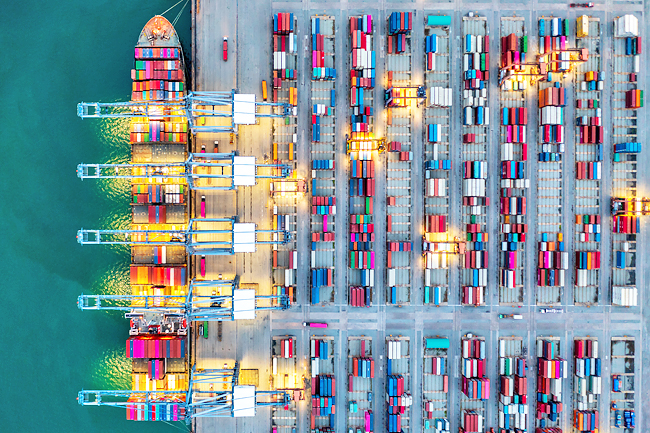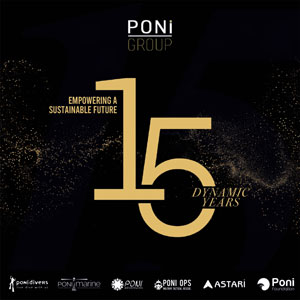Danial Norjidi
Global trade growth is still expected to be subpar despite a slight upgrade to gross domestic product (GDP) projections since last fall, according to a new forecast from the World Trade Organization (WTO).
The WTO’s new Global Trade Outlook and Statistics report, released on April 5, highlights five key points, the first of which is that world merchandise trade volume is projected to grow 1.7 per cent in 2023 before picking up to 3.2 per cent in 2024.
It also stated that “risks to the forecast are tilted to the downside, including geopolitical tensions, food insecurity, potential financial instability stemming from monetary policy tightening, and increasing levels of debt”.
Thirdly, the report underlined that trade volume growth in 2022 was slower than expected at 2.7 per cent following a fourth quarter slump, but still stronger than worst case scenarios considered at the start of the war in Ukraine.
In addition, another finding is that the value of world merchandise trade rose 12 per cent to USD25.3 trillion in 2022, inflated in part by high global commodity prices.
A fifth key point in the report is that the value of world commercial services trade increased 15 per cent in 2022 to USD6.8 trillion.
It also noted that digitally delivered services exports were worth USD3.82 trillion in the same year.

As the WTO elaborated in a press statement, “Weighed down by the effects of the war in Ukraine, stubbornly high inflation, tighter monetary policy and financial market uncertainty, the volume of world merchandise trade is expected to grow by 1.7 per cent this year, following 2.7 per cent growth in 2022, a smaller-than-expected increase that was pulled down by a sharp slump in the fourth quarter.”
The WTO further explained that its trade projections, as set out in the report, estimate real global GDP growth at market exchange rates of 2.4 per cent for 2023.
Furthermore, projections for both trade and output growth are below the averages for the past 12 years of 2.6 per cent and 2.7 per cent respectively.
The WTO said that the 2.7 per cent increase in world trade volume in 2022 was weaker than their October forecast of 3.5 per cent, as a sharper-than-expected quarter-on-quarter decline in the fourth quarter dragged down growth for the year.
“Several factors contributed to that slump, including elevated global commodity prices, monetary policy tightening in response to inflation, and outbreaks of COVID‑19 that disrupted production and trade in China.
“Notably, trade growth last year turned out to be in line with the 2.4 per cent to three per cent baseline scenario in the WTO’s March 2022 initial report on the war in Ukraine, and well above its more pessimistic scenario in which trade would have grown just 0.5 per cent as countries started to split into competing economic blocs. In the event, international markets remained broadly open.”
The statement also mentioned that a follow-up study released by the WTO last month documented how vulnerable economies were able to compensate for essential food supplies cut off by the war by finding alternative products and suppliers.
The 1.7 per cent forecast for trade growth in 2023, meanwhile, is up from the previous estimate of one per cent from last October.
“A key factor here is the relaxation of COVID-19 pandemic controls in China, which is expected to unleash pent-up consumer demand in the country, in turn boosting international trade.”
“Looking ahead to 2024, trade growth should rebound to 3.2 per cent, as GDP picks up to 2.6 per cent, but this estimate is more uncertain than usual due to the presence of substantial downside risks, including geopolitical tensions, food supply shocks, and the possibility of unforeseen fallout from monetary tightening,” the statement added.
Meanwhile, WTO Director-General Ngozi Okonjo-Iweala said, “Trade continues to be a force for resilience in the global economy, but it will remain under pressure from external factors in 2023. This makes it even more important for governments to avoid trade fragmentation and refrain from introducing obstacles to trade.
“Investing in multilateral cooperation on trade, as WTO members did at our Twelfth Ministerial Conference last June, would bolster economic growth and people’s living standards over the long term.”
WTO Chief Economist Ralph Ossa added, “The lingering effects of COVID-19 and the rising geopolitical tensions were the main factors impacting trade and output in 2022 and this is likely to be the case in 2023 as well.
“Interest rate hikes in advanced economies have also revealed weaknesses in banking systems that could lead to wider financial instability if left unchecked. Governments and regulators need to be alert to these and other financial risks in the coming months.”






